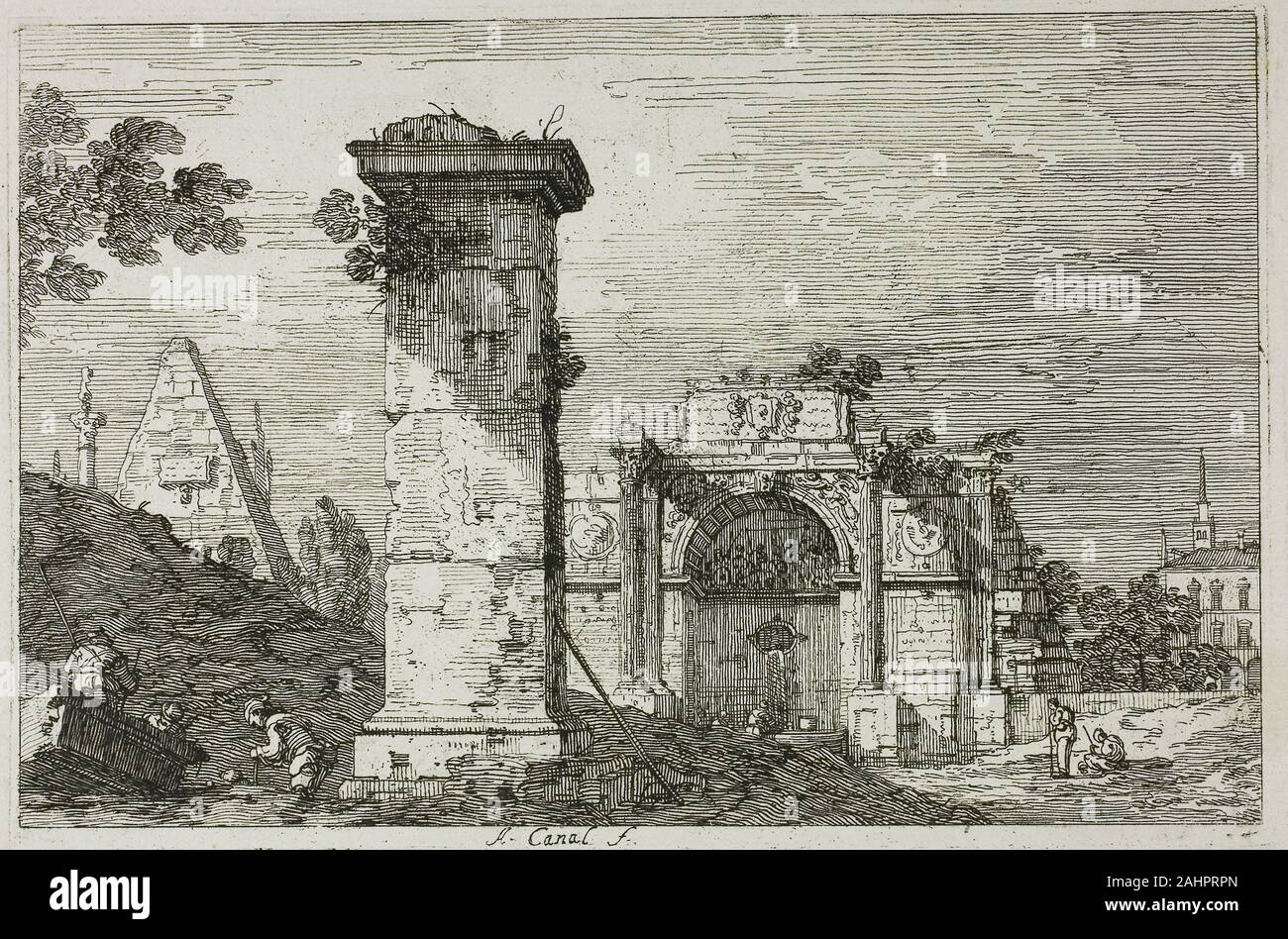Canaletto. Landscape with Ruined Monuments, from Vedute. 1735–1744. Italy. Etching in black on ivory laid paper Curiously, Canaletto never printed either of these energetic capriccio landscapes (depictions of fantastic architecture or ruins) individually. Instead, they exist only as a pair on a single sheet (for the right half, see 1922.1381.14). While both images include fictional antiquarian architectural elements, it is not known why the artist combined them. Perhaps it was their mirrored compositions when placed side by side, both images slope inward toward a church that straddles the marg

Image details
Contributor:
WBC ART / Alamy Stock PhotoImage ID:
2AHPRPNFile size:
17 MB (1.7 MB Compressed download)Releases:
Model - no | Property - noDo I need a release?Dimensions:
3000 x 1980 px | 25.4 x 16.8 cm | 10 x 6.6 inches | 300dpiMore information:
This image is a public domain image, which means either that copyright has expired in the image or the copyright holder has waived their copyright. Alamy charges you a fee for access to the high resolution copy of the image.
This image could have imperfections as it’s either historical or reportage.
Canaletto. Landscape with Ruined Monuments, from Vedute. 1735–1744. Italy. Etching in black on ivory laid paper Curiously, Canaletto never printed either of these energetic capriccio landscapes (depictions of fantastic architecture or ruins) individually. Instead, they exist only as a pair on a single sheet (for the right half, see 1922.1381.14). While both images include fictional antiquarian architectural elements, it is not known why the artist combined them. Perhaps it was their mirrored compositions when placed side by side, both images slope inward toward a church that straddles the margin between the plates and connects the two scenes.